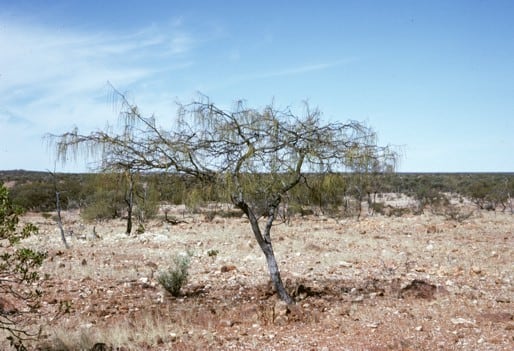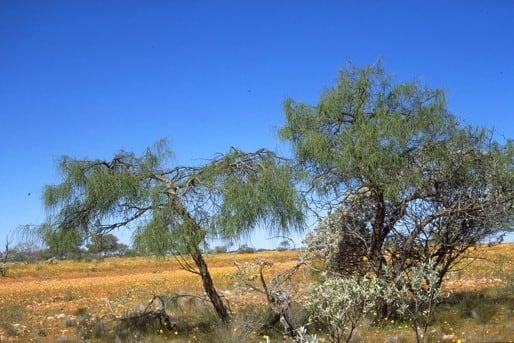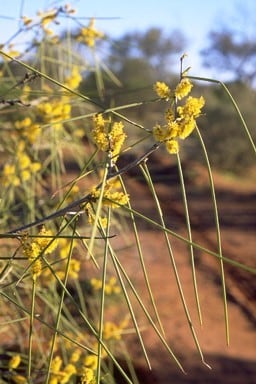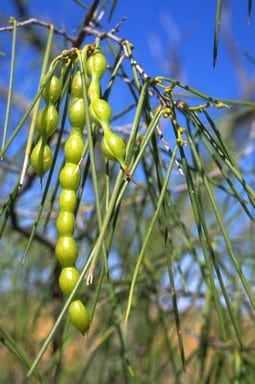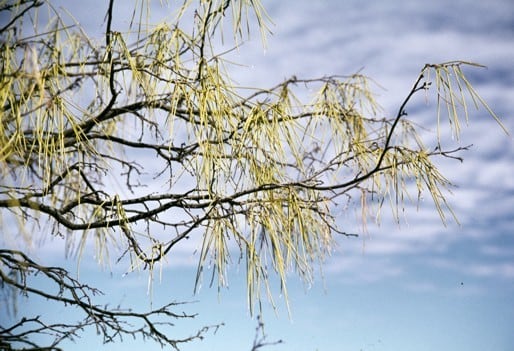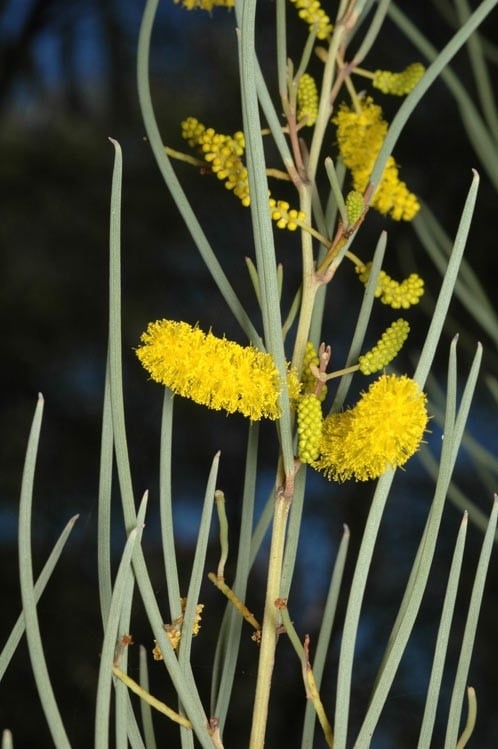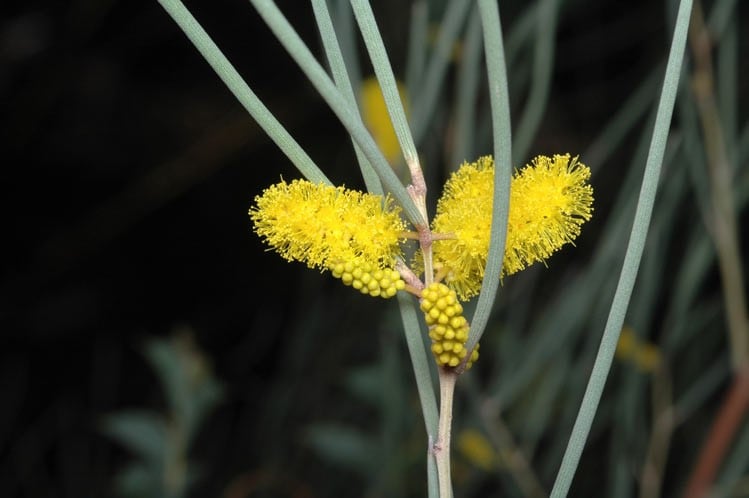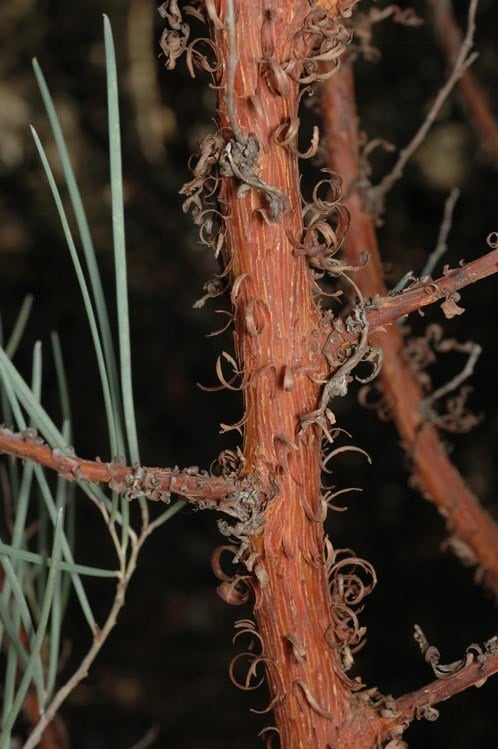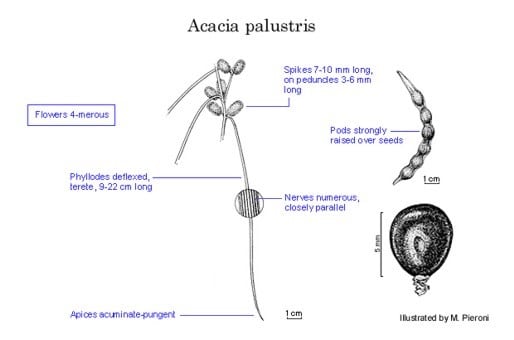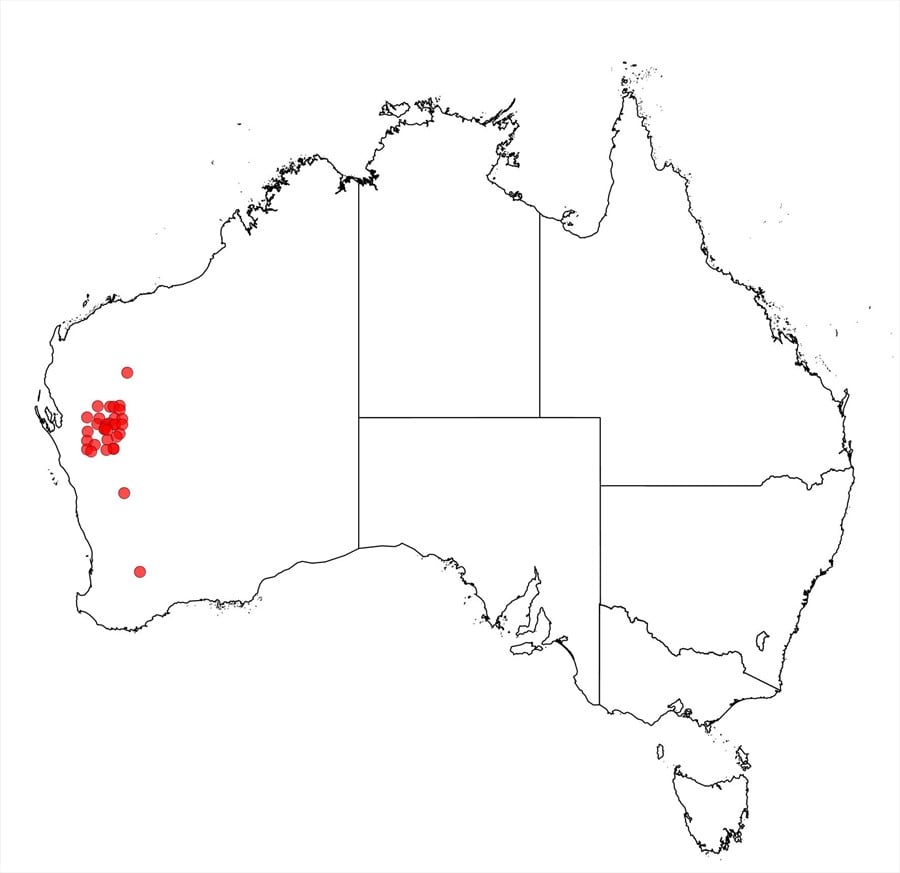Acacia palustris Luehm.
WATTLE
Acacias of Australia
Common Name
Needlewood
Family
Fabaceae
Distribution
Discontinuous, occurring on Pingandy Stn (Ashburton R.) and from Errabiddy Stn (near Gascoyne R.) S to Murgoo Stn (Murchison R.), north-western W.A.
Description
Shrub or tree 2–4 m high, somewhat gnarled. Branchlets glabrous. Phyllodes vertically deflexed, straight, terete, 9–22 cm long, 1–1.5 mm diam., long-tapering acuminate, pungent, rigid, glabrous, with ±16 closely parallel, ±raised nerves. Inflorescences simple, 2 per axil; peduncles 3–6 mm long, glabrous; spikes 7–10 mm long, 4–5 mm diam., densely flowered. Flowers 4-merous; sepals free. Pods linear, strongly raised over and ±constricted between seeds, slightly curved, to 16.5 cm long, 7.5–8 mm wide, thin-crustaceous, irregularly longitudinally striate, glabrous. Seeds longitudinal, broadly elliptic, 6.5–7.5 mm long, dull, dark brown to black; aril minute.
Habitat
Usually grows on loamy alluvial plains in shrubland, often with mulga group (Acacia aneura and its allies).
Specimens
W.A.: 3 km ESE of Murgoo Stn HS, R.J.Cranfield 5230 (PERTH); Meka Stn, A.A.Mitchell 893 (K, MEL, PERTH); 20 km S of Errabiddy HS, A.A.Mitchell 1557 (PERTH); Pingandy Stn, 1972, M.Scott (PERTH).
Notes
Very distinctive on account of its vertically deflexed, terete phyllodes. Relationships uncertain.
FOA Reference
Data derived from Flora of Australia Volumes 11A (2001), 11B (2001) and 12 (1998), products of ABRS, ©Commonwealth of Australia
Author
R.S.Cowan
Minor edits by B.R.Maslin
This identification key and fact sheets are available as a mobile application:
URL: https://apps.lucidcentral.org/wattle/
© Copyright 2018. All rights reserved.
